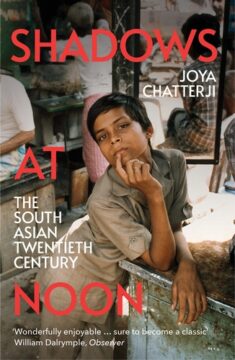Joya Chatterji at Literary Hub:
 How did we become ‘Indians’, ‘Pakistanis’ and ‘Bangladeshis’ after the two divisions of the subcontinent? Given that national identity was so fragile and contested before 1947, how did it become a matter so ‘natural’ after it? Or did it? Did nation-making projects succeed?
How did we become ‘Indians’, ‘Pakistanis’ and ‘Bangladeshis’ after the two divisions of the subcontinent? Given that national identity was so fragile and contested before 1947, how did it become a matter so ‘natural’ after it? Or did it? Did nation-making projects succeed?
Partition is often thought of as a physical process, a massive earthquake that sent different segments of the subcontinent hurtling apart in different directions. Because India and Pakistan (and later Bangladesh) evolved differently in certain important respects, and because the chatter about these differences has been so loud, the facts of their shared predicaments in the early years of nation-building have been all but drowned out. India and Pakistan evolved similar strategies in the face of comparable challenges, albeit on different scales. Common patterns were formed and persist across South Asia, partition notwithstanding. On both sides of the Radcliffe Line, nation-building shared similar premises. It tried, but failed, to produce ersatz citizenries. It is as well that we remember this.
More here.
Enjoying the content on 3QD? Help keep us going by donating now.
